Semantic and Syntactic Dimensional Analysis of Rural Wooden Mosque Architecture in Borçka
Abstract
1. Introduction
- Tribal religions: (Religions of primitives)
- Religions of peoples or nations: (Ancient Egyptian, Greek, Roman, Germanic religions; Judaism, Shintoism, etc.)
- World religions: (Islam, Christianity, Buddhism, Chinese religions, etc.)
- Polytheistic religions: (mostly religions of antiquity)
- Monotheistic religions: (Islam, Christianity, Judaism)
- Nature religions: (Religions of primitives)
- Ritual-theoretical religions: (Ancient Indian and Ancient American religions)
- Religions of the law: (Judaism)
- Revelation religions (Islam, Christianity)
- Moral religions: (Confucianism, Taoism)
- Religions with prophets: (Buddhism, Islam, Christianity, Judaism)
- Mythic religions: (Primitive religions)
- Religions with a book: (Most religions other than primitive religions)
- Religions without a book: (Primitive religions) [13].
2. Islam Religion
3. Islamic Philosophy
- Factors arising from the structure of the Islamic religion itself (theology, jurisprudence, mysticism),
- Contact with neighboring and ancient cultures,
- Climate and material conditions,
- Experience and technological development,
- National, local and personal aesthetics.
- Çam (2019) [19] analyzed the character and content of Islamic art as:
- The escape from realism,
- Contemplation and geometry,
- Balance between nature and the supernatural,
- Belief in a transcendent God and transcendent art,
- The mortality and dreaminess of worldly life,
- Sufism,
- The inevitable beauty of death.
- Coating
- Change of Materials
- Changes in Structures
- Changes in the Content
- Variation of the Uncertainty of the Function
- Unity/Modules
- Consecutive combinations
- Repeat
- Dynamism
- Complexity [22].
4. Mosque
5. Material and Method
5.1. Study Area
5.2. Selection of Samples
5.3. History
5.4. Method
5.5. Semiotics
- The single-element relationship of the signifier—the relationship between itself, its formal structure and the environment in which it is realized: Syntactic Level or Syntactic Dimension.
- The two-element relationship of the signifier—the relationship between itself and the object it represents or replaces: Semantic Level or Semantic Dimension.
- Three-element relationship of the sign; the relationship between itself, the object it represents or replaces and the user/interpretation: Useful Level or Useful Dimension [77].
- The material/existing properties of the symbol with emotional activity,
- The meaning that takes root in the social consciousness and creates an image,
5.6. Creating the Research Method in the Context of Semiotics
- The concept of Allah: vahdaniyet, beka, ilim, kudret
- The concept of ahiret
- Among the attributes that define the essence of Allah: vahdaniyet, beka
- Among the attributes that reveal the relationship between God and the universe: ilim, kudret
- 1.
- The Concept of Vahdaniyet
- 2.
- The Concept of Beka
- 3.
- The Concept of İlim
- 4.
- Concept of Kudret
- 5.
- The Concept of the Ahiret
Symmetry, Dominance, Rhythm, Balance, Contrast, Koram, Harmony, Unity
6. Basic Design Principles
6.1. Symmetry
6.2. Dominance
- -
- Special dimension-measure; an architectural arrangement can be given a different dimension from all other elements, indicating its importance and making it dominant. This sovereignty is visualized by the different size of the element. In this order, the form can be small or large in size. Although it is small, it can also dominate the arrangement with its well-defined place.
- -
- Shaping different from others is the formal differentiation of form or space from other elements in the composition. They can visually dominate the arrangement by being clearly different in shape from the others. This differentiation is possible through the use of contrasting forms of geometry.
- -
- Favorable and strategic location has an important place in the composition of form and space with its strategic location among other features. The hierarchical importance of placements or locations for form and space is classified as the boundary of the linear arrangement/axial arrangement, the central element of the gazing arrangement and the focal point of the central/radiational arrangement (Table 4).
6.3. The Principle of Rhythm and Repetition
6.4. Balance
6.5. Contrast
6.6. Koram
6.7. Harmony
6.8. Unity
- -
- In the path of harmony, the principles of repetition, appropriateness and correspondence are utilized in order to achieve unity. Unity can be achieved through harmony of form and measure.
- -
- In the way of dominance and variability; it is easier to reach unity. The principle of dominance is also used. Unity can be achieved with the dominance of measure and shape variability.
- -
7. Findings
7.1. Examples of Mosques Examined
| İremit Mosque | Merkez Mosque | Muratlı Köyü Mosque | Düzköy Mosque |
|---|---|---|---|
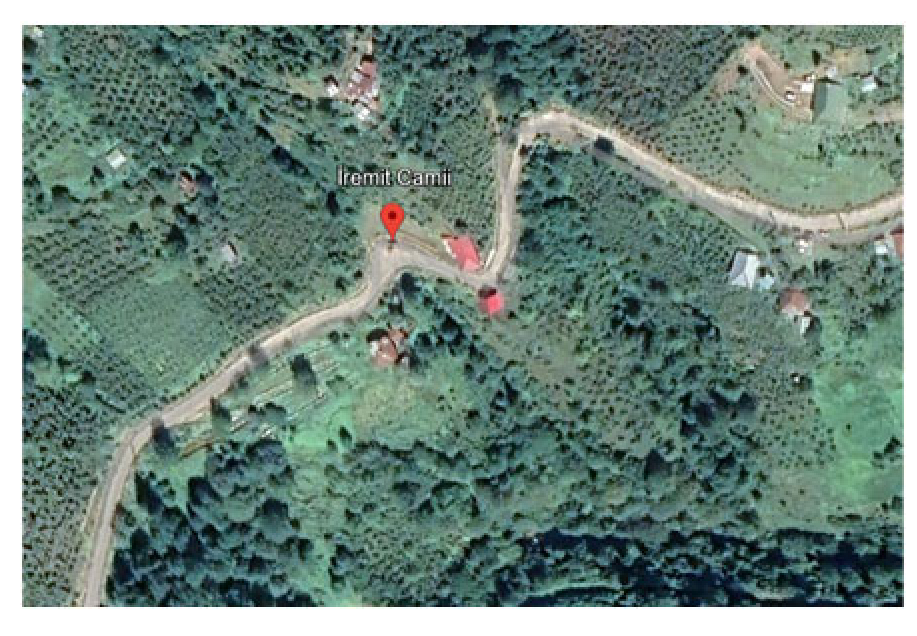 | 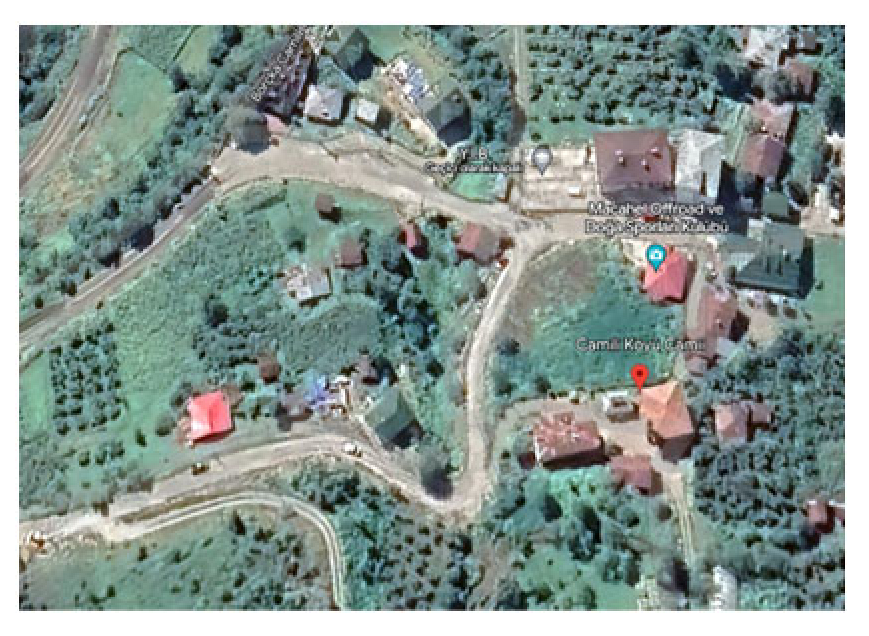 | 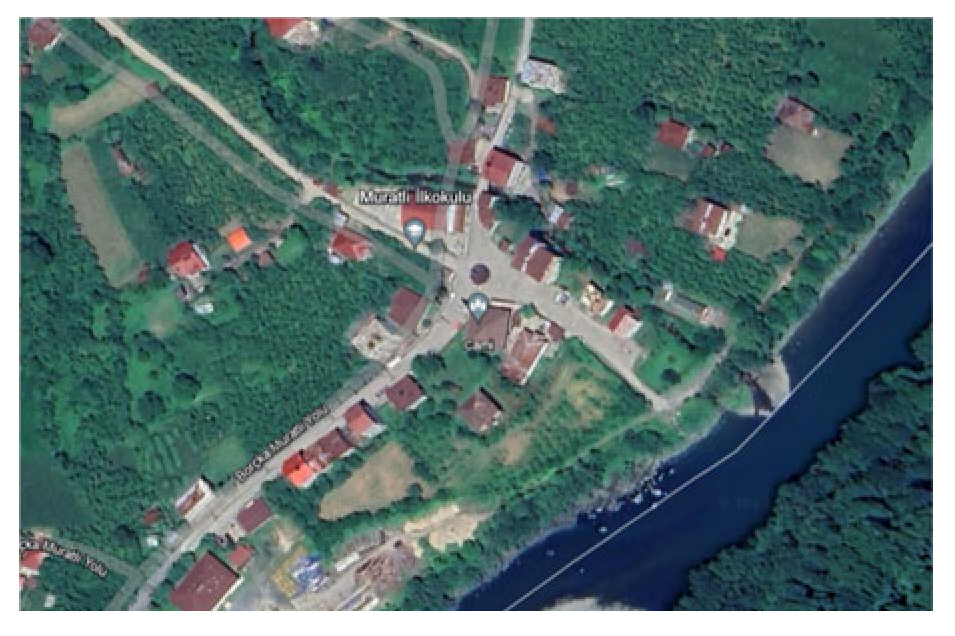 | 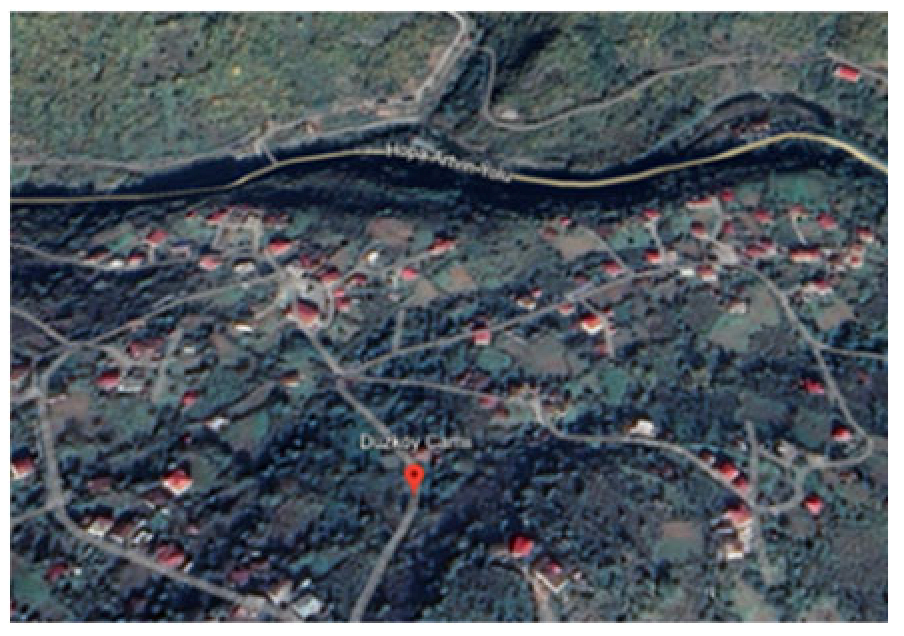 |
| Iremit Mosque | Merkez Mosque | Muratlı Köyü Mosque | Düzköy Mosque |
|---|---|---|---|
 |  |  | 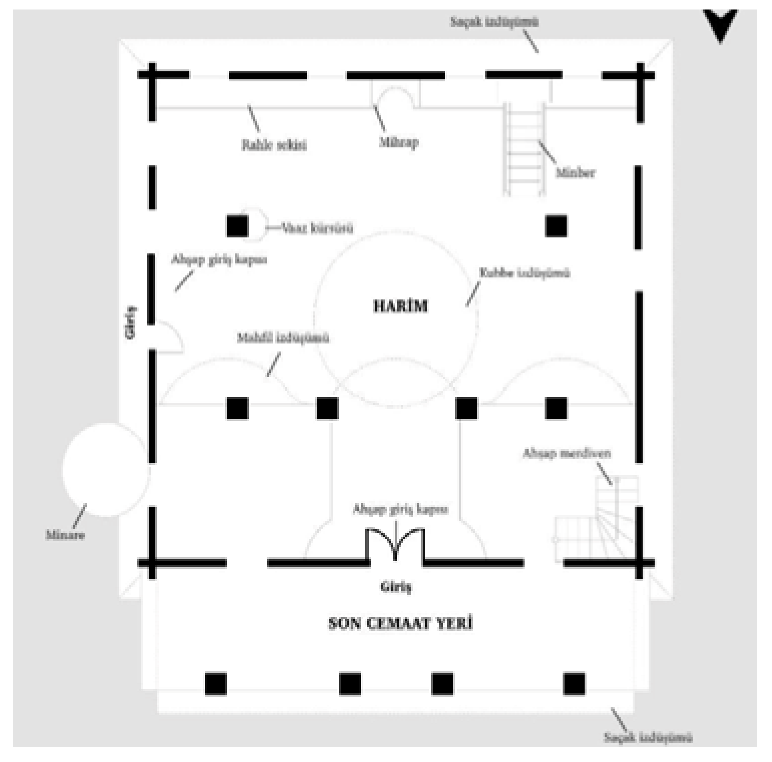 |
| İremit Mosque | Merkez Mosque | Muratlı Köyü Mosque | Düzköy Mosque |
|---|---|---|---|
 | 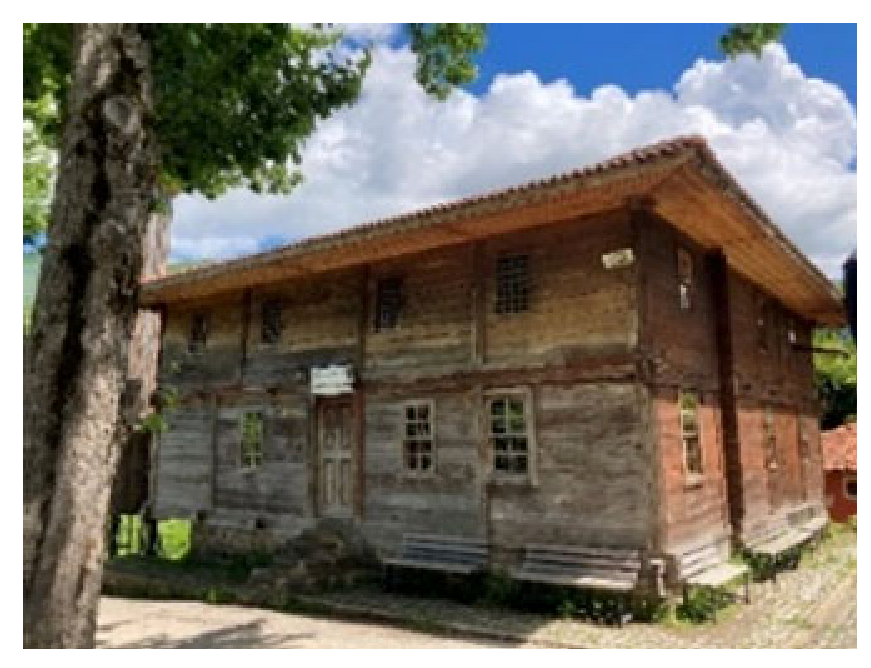 |  | 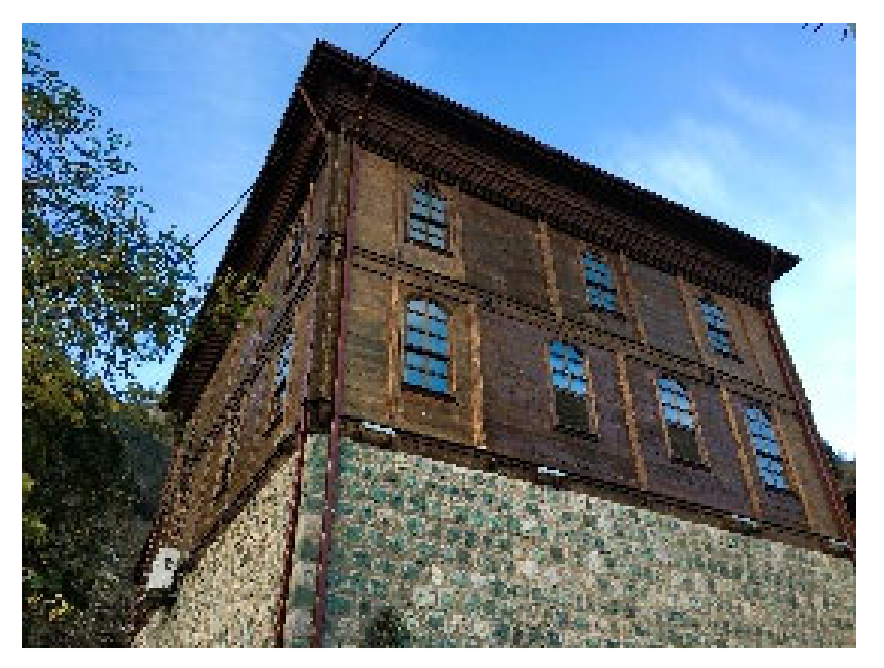 |
| İremit Mosque | Merkez Mosque | Muratlı Köyü Mosque | Düzköy Mosque |
|---|---|---|---|
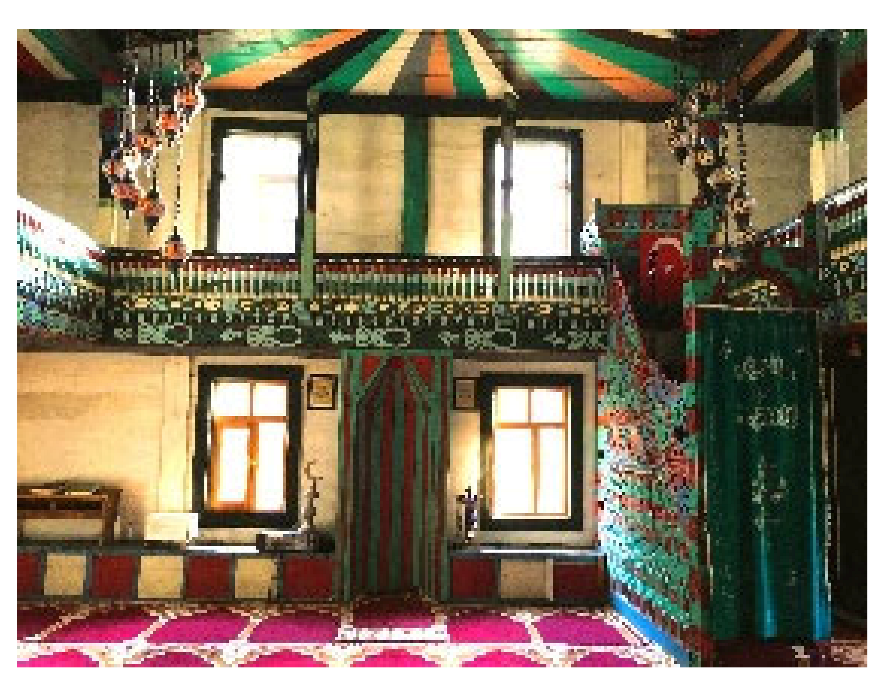 | 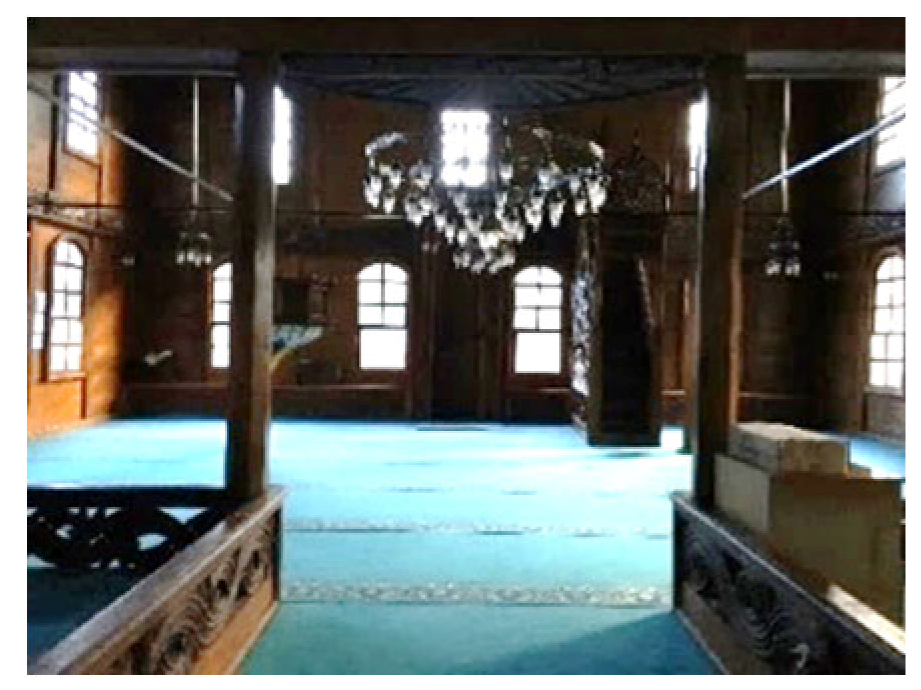 | 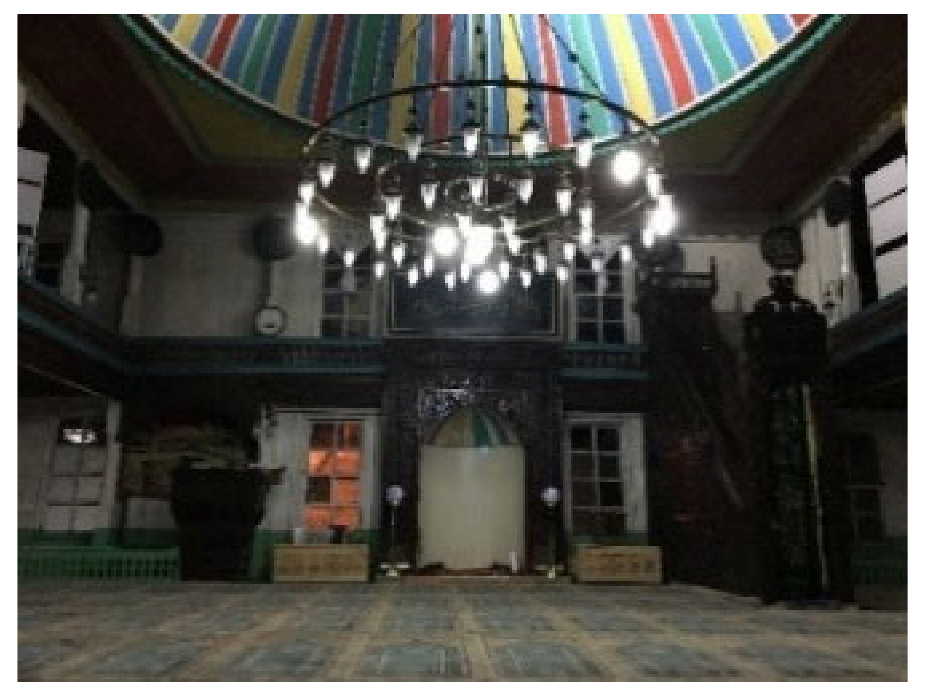 |  |
| İremit Mosque | Merkez Mosque | Muratlı Köyü Mosque | Düzköy Mosque |
|---|---|---|---|
 |  | 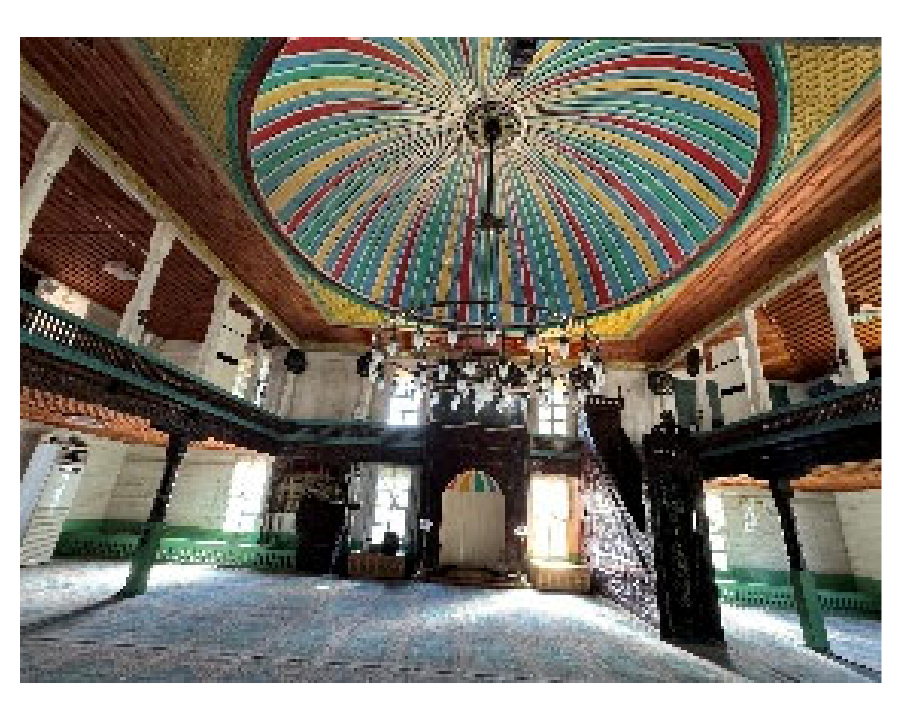 |  |
| İremit Mosque | Merkez Mosque | Muratlı Köyü Mosque | Düzköy Mosque |
|---|---|---|---|
 | 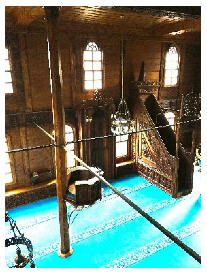 |  | 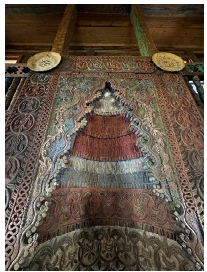 |
| İremit Mosque | Merkez Mosque | Muratlı Köyü Mosque | Düzköy Mosque |
|---|---|---|---|
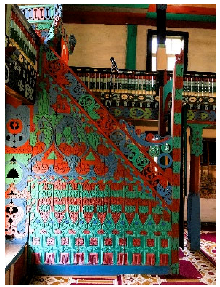 | 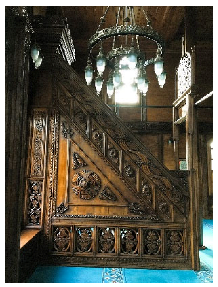 | 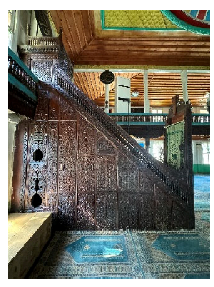 | 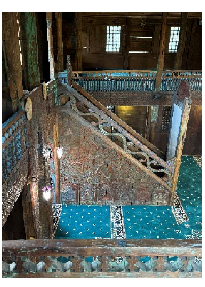 |
| İremit Mosque | Merkez Mosque | Muratlı Köyü Mosque | Düzköy Mosque |
|---|---|---|---|
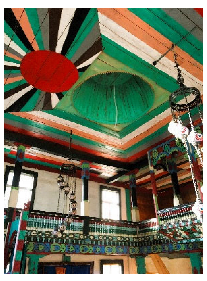 | 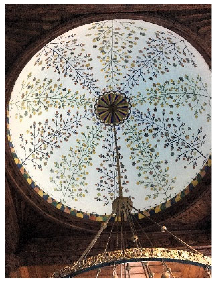 | 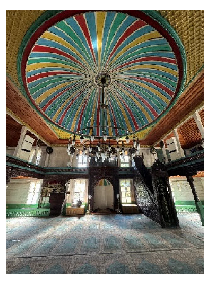 |  |
7.2. Findings Regarding the Semantic and Syntactic Analyzes of the Concepts Examined
- 1.
- Concept of Vahdaniyet, Semantic and Syntactic Dimension Relationship
- 2.
- Semantic and Syntactic Dimension Relationship Findings of the Concept of Beka
- 3.
- Findings on the Semantic and Syntactic Dimension Relationship of the Concept of İlim
- 4.
- Semantic and Syntactic Dimension Relationship Findings of the Concept of Kudret
- 5.
- Findings on Semantic and Syntactic Dimension Relationship of the Concept of Ahiret
8. Conclusions and Recommendations
- Key Findings:
- Syntactic Dimensions of Abstract Concepts:
- Recommendations for Future Design:
Author Contributions
Funding
Data Availability Statement
Conflicts of Interest
References
- Matracchi, P.; Habibabad, A.S. Prioritizing the effect of ‘Light’ in the religious places and environments with an emphasis on the sense of spirituality. Ain Shams Eng. J. 2022, 13, 101514. [Google Scholar] [CrossRef]
- Archer, P. History of Religions 101 From Allah to Zen-Buddhism: Everything You Need to Know About the Important People, Rituals and Beliefs That Have Shaped World Religions; Adams Media: Avon, MA, USA, 2014. [Google Scholar]
- Salimi, A.Y.; Salimi, A.; Pilehvarian, N.K. Position of Light and Water in Architecture and Philosophy of Art. Turkish Online J. Des. Art Commun. 2016, 6, 58–67. [Google Scholar] [CrossRef] [PubMed]
- Salimi, A.; Salimi, A.Y.; Pilehvarian, N.K. the Role and Impact of Religion on the Architecture of Mosques and Churches. Turkish Online J. Des. Art Commun. 2016, 6, 22–31. [Google Scholar] [CrossRef] [PubMed]
- Asefi, M.; Khasraghi, S.S.; Roders, A.P. Art and technology interactions in Islamic and Christian context: Historical approach to architectural globalization. Front. Archit. Res. 2019, 8, 66–79. [Google Scholar] [CrossRef]
- Li, W.; Liu, T.; Liu, H.; Li, Y.; Li, S.; Zhang, Y. Spatial distribution characteristics of Tibetan Buddhism principal-subordinate monastery systems in the Hehuang region. Herit. Sci. 2024, 12, 1–26. [Google Scholar] [CrossRef]
- Dumorties, B.; Adadağ, Ö.; Ergüven, E. Dinler Atlasi: Inançlar, Ibadetler Ve Ülkeler; NTV Yayınları: Frankfurt, Germany, 2007. [Google Scholar]
- Ataç, M. İslam Mimarlığı Kavramı Bir Geleneksel Kültür Kavramıdır. Mimar Dergisi. 1981, pp. 11–12. Available online: http://www.mimarlikdergisi.com/index.cfm?sayfa=mimarlik&DergiSayi=225 (accessed on 9 December 2024).
- Biondo, V.F. The Architecture of Mosques in the US and Britain. J. Muslim Minor. Aff. 2006, 26, 399–420. [Google Scholar] [CrossRef]
- Çakıroğlu, B.; Engin, N. Dini İnanışların Mimariye Etkisi. Dini Araştırmalar 2014, 17, 67–92. [Google Scholar] [CrossRef]
- Askarizad, R.; He, J.; Ardejani, R.S. Semiology of Art and Mysticism in Persian Architecture According to Rumi’s Mystical Opinions (Case Study: Sheikh Lotf-Allah Mosque, Iran). Religions 2022, 13, 1059. [Google Scholar] [CrossRef]
- Tümer, A.; Küçük, G. History of Religions; Ocak Publications: Ankara, Turkey, 1997. [Google Scholar]
- Örnek, S.V. 100 Questions on Religion, Magic, Art, Legend among Primitives; Gerçek Publishing House: Istanbul, Turkey, 2000. [Google Scholar]
- Zu, X.; Gao, C.; Wang, Y. Towards religious landscape: Protection of Tibetan Buddhist heritage in Aba Prefecture. Int. J. Appl. Earth Obs. Geoinf. 2024, 130, 103885. [Google Scholar] [CrossRef]
- Cansever, T. City and Architecture in Islam; İz Publishing: İstanbul, Turkey, 1997; p. 6. [Google Scholar]
- Alalhesabi, M.; Hosseini, S.B.; Nassabi, F.; Sedhpour, B.S. Analyzing Islamic Architecture Visual Quality in Bushehr City: Case Study: Religious Space Kazeruni Barhah (Hosseiniye). J. Islam. Archit. 2012, 2, 28–35. [Google Scholar] [CrossRef]
- Şerif, M.M. History of Islamic Thought; Human Publications: İstanbul, Turkey, 1990. [Google Scholar]
- Nasr, S.H. Islamic Art and Spirituality; İnsan Publications: İstanbul, Turkey, 1987. [Google Scholar]
- Çam, N. Art in Islam and Islam in Art; Akçağ: Kazan, Turkey, 2019. [Google Scholar]
- Ghanaati, M.; Azeri, A.R.K.; Ghanaati, F.; Hosseini, S.B. Role of Movement and Stillness Elements in Development of Iranian-islamic Cities in order to Make Optimal Satisfaction in Human (Case Study: Bazaar, Mosque, House). Procedia—Soc. Behav. Sci. 2015, 201, 201–212. [Google Scholar] [CrossRef][Green Version]
- Wahdattalab, M.; Nikmaram, A. Investigation of Aesthetic Preference the Simplicity and the Complexity of the Visual Qualities of Motifs in Islamic Architecture. Turkish Online J. Des. Art Commun. 2016, 6, 1550–1566. [Google Scholar] [CrossRef] [PubMed]
- Faruki, L.L.; Faruki, İ.R. Atlas of Islamic Culture; Inkılap Publications: Istanbul, Turkey, 2022. [Google Scholar]
- Ali, L.A.; Mustafa, F.A. Evaluating the impact of mosque morphology on worshipers’ visual comfort: Simulation analysis for daylighting performance. Ain Shams Eng. J. 2024, 15, 102412. [Google Scholar] [CrossRef]
- Ahmad, M.; Rashid, K.; Naz, N. Study of the ornamentation of Bhong Mosque for the survival of decorative patterns in Islamic architecture. Front. Archit. Res. 2018, 2, 7. [Google Scholar] [CrossRef]
- Nejad, J.M.; Azemati, H.; Sadeghi, A.; Abad, H. Investigating Sacred Architectural Values of Traditional Mosques Based on the Improvement of Spiritual Design Quality in the Architecture of Modern Mosques (Case Study: Traditional Mosques in Iran). Int. J. Archit. Eng. Urban Plan 2019, 29, 47–59. [Google Scholar]
- Almandrawy, M.A.; Sayed, E.; Ahmad, B. Islamic Art and the Identity of the Architecture Fundamental Design. Int. J. Trend Sci. Res. Dev. (IJTSRD) Islam. Art Identity Archit. Fundam. Des. 2022. [Google Scholar]
- Taib, M.Z.M.; Rasdi, M.T. Islamic Architecture Evolution: Perception and Behaviour. Procedia—Soc. Behav. Sci. 2012, 49, 293–303. [Google Scholar] [CrossRef][Green Version]
- Yücel, A. On Islamic Architecture. Architecture 1981, 5, 4–6. [Google Scholar]
- Eilouti, B. An Interdisciplinary Framework of the Visual and Semiotic Language of Architecture: A Case Study of the Süleymaniye Mosque. Int. J. Architecton. Spat. Environ. Des. 2024, 18, 73–102. [Google Scholar] [CrossRef]
- Elwazani, S.A. Sacral Qualities of Form in Mosque Architecture: Transformation of the Arts of the Kur’an into the Arts of the Mosque. Am. J. Islam Soc. 1995, 12, 478–495. [Google Scholar] [CrossRef]
- Kuban, D. Sinan’s Art and Selimiye; Türkiye İşbank Cultural Publications: Istanbul, Turkey, 2017. [Google Scholar]
- Khan, H.-U. The Architecture of the Mosque, an Overview and Design Directions. Expr. Islam Build 1990, 109–127. [Google Scholar]
- Utaberta, N.; Asif, N.; Rasdi, M.T.M.; Yunos, M.Y.M.; Ismail, N.A.; Ismail, S. The concept of mosque based on islamic philosophy: A review based on early islamic texts and practices of the early generation of the Muslims. Adv. Environ. Biol. 2015, 9, 371–374. [Google Scholar]
- Alnaim, M.M. The Architecture of Mosque Integration of Decoration, Functionality, and Spirituality: An Overview of Najd Region Mosque Architecture. J. Eng. Res. 2023. [Google Scholar] [CrossRef]
- Güzel, E. Quran Foundations of Islamic Art and Aesthetics. Master’s Thesis, Selçuk University, Institute of Social İlims, Konya, Turkey, 2008. [Google Scholar]
- Ramzy, N.S. Visual language in Mamluk architecture: A semiotic analysis of the Funerary Complex of Sultan Qaitbay in Cairo. Front. Archit. Res. 2013, 3, 338–353. [Google Scholar] [CrossRef]
- Kharazmi, M.; Sarhangi, R. An Analytical Study of the Methods of Design and Geometric Constructions in Architectural Ornaments of the Friday Mosque of Forumad. Nexus Netw. J. 2016, 18, 275–310. [Google Scholar] [CrossRef][Green Version]
- Eilouti, B. Sinan and Palladio: A comparative morphological analysis of two sacred precedents. Front. Archit. Res. 2017, 6, 231–247. [Google Scholar] [CrossRef]
- Sadeqi, S.; Ekhlassi, A.; Norouzian-Maleki, S. An analysis of structural aesthetics in architecture case study: Taj-Ol-Molk Dome, Jāmeh Mosque of Isfahan, Iran. SN Appl. Sci. 2019, 1, 570. [Google Scholar] [CrossRef]
- Sujak, I.; Mazlan, I.M.; Azman, N.S.; Alias, N.U.A.U. Traditional Mosque Architecture: Portrayal of society sociology. Environ. -Behav. Proc. J. 2021, 6, 205–214. [Google Scholar] [CrossRef]
- Kiessel, M.; Tozan, A. Mosque architecture in Cyprus—Visible and invisible aspects of form and space, 19th to 21st centuries. Religions 2021, 12, 1055. [Google Scholar] [CrossRef]
- Serjeant, R.B. Islamic City; Iz Publishing: İstanbul, Turkey, 1997. [Google Scholar]
- Atay, Y.N.; Öztürk, H. The Truth of Islam; Ankara University Faculty of Theology Publications: Ankara, Turkey, 1995. [Google Scholar]
- Yörükan, Y.Z. Islam and the Principles of Islam with Verses from the Quran, 1st ed.; T.C. Ministry of Culture Publications: Ankara, Turkey, 1998. [Google Scholar]
- Topaloğlu, B. ‘Kudret’ TDV Encyclopedia of Islam; Türkiye Religious Foundation: Istanbul, Turkey, 2002; Volume 26, pp. 316–317. [Google Scholar]
- Hasol, D. Encyclopedic Dictionary of Architecture; Yem Publication: Istanbul, Turkey, 2017. [Google Scholar]
- Hasol, D. Architecture; Yem Publication: Istanbul, Turkey, 2019. [Google Scholar]
- Mitias, M.H.; Al Jasmi, A. Form and function in the congregational mosque. Estet. Cent. Eur. J. Aesthet. 2018, 55, 2018. [Google Scholar] [CrossRef][Green Version]
- Grabar, O. The Formation of Islamic Art; Yapı Kredi Culture and Arts Publishing: Istanbul, Turkey, 1998. [Google Scholar]
- Rahman, F. Major Themes of the Qur’an; University of Chicago Press: Chicago, IL, USA, 2009. [Google Scholar]
- Bammat, N. The understanding of space in Islam, Science and Art. Indones. J. Islam Muslim Soc. 1987, 11, 3–4, 41–50. [Google Scholar]
- Eldien, H.H. Evaluation of the influence of Mihrab shape on sound quality in Mosques. J. Eng. Res. 2024. [Google Scholar] [CrossRef]
- Dickie, J. Allah and Eternity: Mosques, Madrasa and Tombs in Architecture of Islamic World; Michell, G., Ed.; Thames and Hudson: London, UK, 1984. [Google Scholar]
- Çakıroğlu, B.; Sağsöz, A.; Akat, R. Creating a method of reflecting the basic concepts of islamic religion in the Ottoman period religious architecture. Int. J. Curr. Res. 2017, 9. [Google Scholar]
- Akat, R.; Çakıroğlu, B.; Bayer, I.R. The reflections of the concept of beauty in the religious architecture: The example of the Ottoman period between the 13th and 17th centuries. Philos. Pap. Rev. 2012, 3, 11. [Google Scholar]
- Akat, R.; Çakıroğlu, B.; Çakıroğlu, E.O. Geleneksel Konutlarda Diş Mekân Öğelerinin Irdelenmesi: Trabzon Ortahisar Ve Pazarkapi Mahalleleri Örneğinde; Artvin Çoruh Üniversitesi Orman Fakültesi Dergisi: Ankara, Turkey, 2024; Volume 25, pp. 256–270. [Google Scholar]
- El-Darwish, I.I.; El-Gendy, R.A. The role of fenestration in promoting daylight performance. The mosques of Alexandria since the 19th century. Alexandria Eng. J. 2016, 4, 55. [Google Scholar] [CrossRef]
- Gawlikowska, A.P. From Semantics to Semiotics Communication of Architecture. Archit. ARTIBUS 2013, 40, 50–61. [Google Scholar]
- Günay, R. Mimar Sinan and His Works; Yem Publication: Istanbul, Turkey, 2002. [Google Scholar]
- Joseph, R. The Semiotics of the Islamic Mosque Author. Arab. Stud. Q. 1981, 3, 285–295. [Google Scholar]
- Al Fahmawee, E.A.D.H. Semiotics as an Approach to the Analysis of Symbolism in Islamic Architectural Arts. Archit. Eng. 2022, 7, 3–19. [Google Scholar] [CrossRef]
- Metwally, E. Achieving the visual perception and gestalt psychology in sultan Hassan mosque building. Open J. Appl. Sci. 2021, 11, 21. [Google Scholar] [CrossRef]
- Johar, S.; Ahmad, A.; Ani, A.; Tahir, M.; Tawil, N.M. Conservation Activities of Old Tranditional Mosque in Malaysia: An Overview. Sch. Hous. Build. Plan. Univ. Malays. 2010, 11, 269–277. [Google Scholar]
- Baharudin, N.A.; Ismail, A.S. Architectural Style of Da’wah Mosque in Malaysia: From Vernacular to Modern Structures. Int. J. Built Environ. Sustain. 2016, 3, 70–78. [Google Scholar] [CrossRef]
- Available online: https://tr.wikipedia.org/wiki/Dosya:Map_of_the_Republic_of_Turkey.png (accessed on 9 December 2024).
- Available online: https://en.wikipedia.org/wiki/Bor%C3%A7ka_District (accessed on 9 December 2024).
- Ahmet, A. Available online: https://www.borcka.bel.tr/sehrin-nufusu-ve-tarihi/ (accessed on 9 December 2024).
- Ching, F.D. Architecture: Form, Space, and Order; John Wiley & Sons: Hoboken, NJ, USA, 2023. [Google Scholar]
- Aksoy, E. Mimarlıkta Tasarım Iletim ve Denetim; Gün Matbaası: İstanbul, Turkey, 1975. [Google Scholar]
- Ertürk, S. An Experimental Study on the Perception of Architectural Space; Karadeniz University Press: Trabzon, Turkey, 1984. [Google Scholar]
- Šijaković, M.; Perić, A. Symbiotic architecture: Redefinition of recycling design principles. Front. Archit. Res. 2017, 1, 7. [Google Scholar] [CrossRef]
- Stankovic, D.; Kostic, A.; Nikolic, V.; Cvetanovic, A. Form in Architecture and Principles of Design; Аpхитeктypa Cтpoитeльcтвo Oбpaзoвaниe: Magnitogorsk, Russia, 2018; pp. 57–63. [Google Scholar] [CrossRef]
- Gulati, N.; Kaur, P.D. Towards socially enabled internet of industrial things: Architecture, semantic model and relationship management. Ad Hoc Netw. 2019, 91, 101869. [Google Scholar] [CrossRef]
- Simitch, A.; Warke, V. The Language of Architecture: 26 Principles Every Architect Should Know; Rockport Publishers: Pitman: Boston, MA, USA, 2014. [Google Scholar]
- Eilouti, B. Concept evolution in architectural design: An octonary framework. Front. Archit. Res. 2018, 2, 7. [Google Scholar] [CrossRef]
- Hewitt, E. Semantic Software Design: A New Theory and Practical Guide for Modern Architects; O’Reilly Media: Sebastopol, CA, USA, 2019. [Google Scholar]
- Özek, V. Determination of Sign and Symbol—Threshold Stage in Architecture; Karadeniz Technical University Printing Workshop: Trabzon, Turkey, 1980. [Google Scholar]
- Egenter, N. Semantic and symbolic architecture. In Architural Anthropology; Press Centrales: Lausanne, Switzerland, 1994; pp. 1–24. [Google Scholar]
- Aydınlı, S. Aesthetic Values in Architecture; İTÜ Faculty of Architecture Printing Workshop: Istanbul, Turkey, 1993. [Google Scholar]
- Nasar, J.L. Environmental Aesthetics: Theory, Research, and Application; Cambridge University Press: Cambridge, UK, 1992. [Google Scholar]
- Januszewski, W.S. Logic, Perception and Beauty—An Outline of the Modern proportion-based approach in Architectura. Buildings 2024, 14, 2266. [Google Scholar] [CrossRef]
- Pietroski, P.M. Events and Semantic Architecture; Oxford University Press: Oxford, UK, 2004. [Google Scholar]
- Bonino, D.; Corno, F.; De Russis, L. A semantics-rich information technology architecture for smart buildings. Buildings 2014, 4, 880–910. [Google Scholar] [CrossRef]
- Usta, G.K.; Usta, A.; Tuluk, Ö.İ. Visual Dictionary for Anatolian Turkish Architecture; Sonhabar Printing: Trabzon, Turkey, 2001. [Google Scholar]
- Enön, Z. History of Settlements Lecture Notes; KTÜ Publications: Trabzon, Turkey, 1987. [Google Scholar]
- Fernández-Jiménez, A.; Puertas, F.; Sobrados, I.; Sanz, J. Structure of calcium silicate hydrates formed in alkaline-activated slag: Influence of the type of alkaline activator. J. Am. Ceram. Soc. 2003, 86, 1389–1394. [Google Scholar] [CrossRef]
- Ögel, S. Seljuk Face of Anatolia, İstanbul; Akbank Publications: Istanbul, Turkey, 1994. [Google Scholar]
- Özel, M.K. The Concept of Center in Religious Architecture (Religious Elements That Give the Place of Worship Its Center Identity). Master’s Thesis, MSU, Institute of Science, İstanbul, Turkey, 1998. [Google Scholar]
- Kılavuz, A.S. Introduction to Islamic Faith and Kalam in Outline; Ensar Neşriyat: İstanbul, Turkey, 2011. [Google Scholar]
- Aydın, A.A. İslâm’da İman ve Esasları; İrfan Yayınevi: İstanbul, Turkey, 1986. [Google Scholar]
- Çakıroğlu, B. Reflections of the Basic Concepts in the Islamic Religion on the Religious Architecture of the Ottoman Period (13th–17th Centuries). Ph.D. Thesis, Karadeniz Technical University, Institute of Ilim and Technology, Trabzon, Turkey, 2006. [Google Scholar]
- Çakıroğlu, B. İslam dinindeki temel kavramların Osmanlı Dönemi türbe mimarisine yansımaları. Türk Kültürü Ve Hacı Bektaşı Veli Araştırma Derg. 2022, 101. [Google Scholar]
- Yalçın, C. Dictionary of Synonyms, Antonyms, Homophones, 2nd ed.; Tutibay Publications: Ankara, Turkey, 2002. [Google Scholar]
- Parlatır, İ. Osmanlı Türkçesi Sözlüğü; Yargı Yayınevi: Ankara, Turkey, 2006. [Google Scholar]
- Available online: https://moonstar.indir.com/windows (accessed on 9 December 2024).
- Graves, M. The Art of Color and Design; McGraw-Hill Book Company, Inc.: New York, NY, USA, 1951. [Google Scholar]
- Gürer, L. Basic Design; İstanbul Technical University Printing House: İstanbul, Turkey, 1990. [Google Scholar]
- Divanlıoğlu, D. Basic Design, Design Elements and Principles; Birsen Publishing House: İstanbul, Turkey, 1997. [Google Scholar]
- Güngör, İ.H. Basic Design; Afa Printing House: İstanbul, Turkey, 1983. [Google Scholar]
- Fidan, M.E. Nigali Vadisi Camilerinin İç Mekân Tasarımı Üzerine Bir Araştırma; DOKAP Bölgesi Uluslararası Sempozyumu: Trabzon, Turkey, 2017. [Google Scholar]
- Taşkan, D. Artvin ili Borçka ve Hopa İlçeleri Camilerinde Ahşap Süslemeler; Sosyal Bilimler Enstitüsü: Istanbul, Turkey, 2011. [Google Scholar]
- Çakıroğlu, E.O.; Çakıroğlu, B.; Taşdemir, T. Artvin’de bulunan tarihi camilere ait minber ve kapıların ahşap süsleme programı açısından değerlendirilmesi. Artvin Çoruh Üniversitesi Orman Fakültesi Derg. 2023, 24, 227–248. [Google Scholar] [CrossRef]
- Aytekin, O.; Eserler, A.M. Ph.D. Thesis, Social Sciences Institute, Yüzüncüyıl University, Van, Turkey, 1996.
- Coşkun, R. Artvin Borçka’daki Yığma Ahşap Camilerin İncelenmesi ve İremit Camisi Koruma Projesi Önerisi; Yıldız Teknik Üniversitesi Fen Bilimleri Enstitüsü Yüksek Lisans Tezi: İstanbul, Turkey, 2021. [Google Scholar]
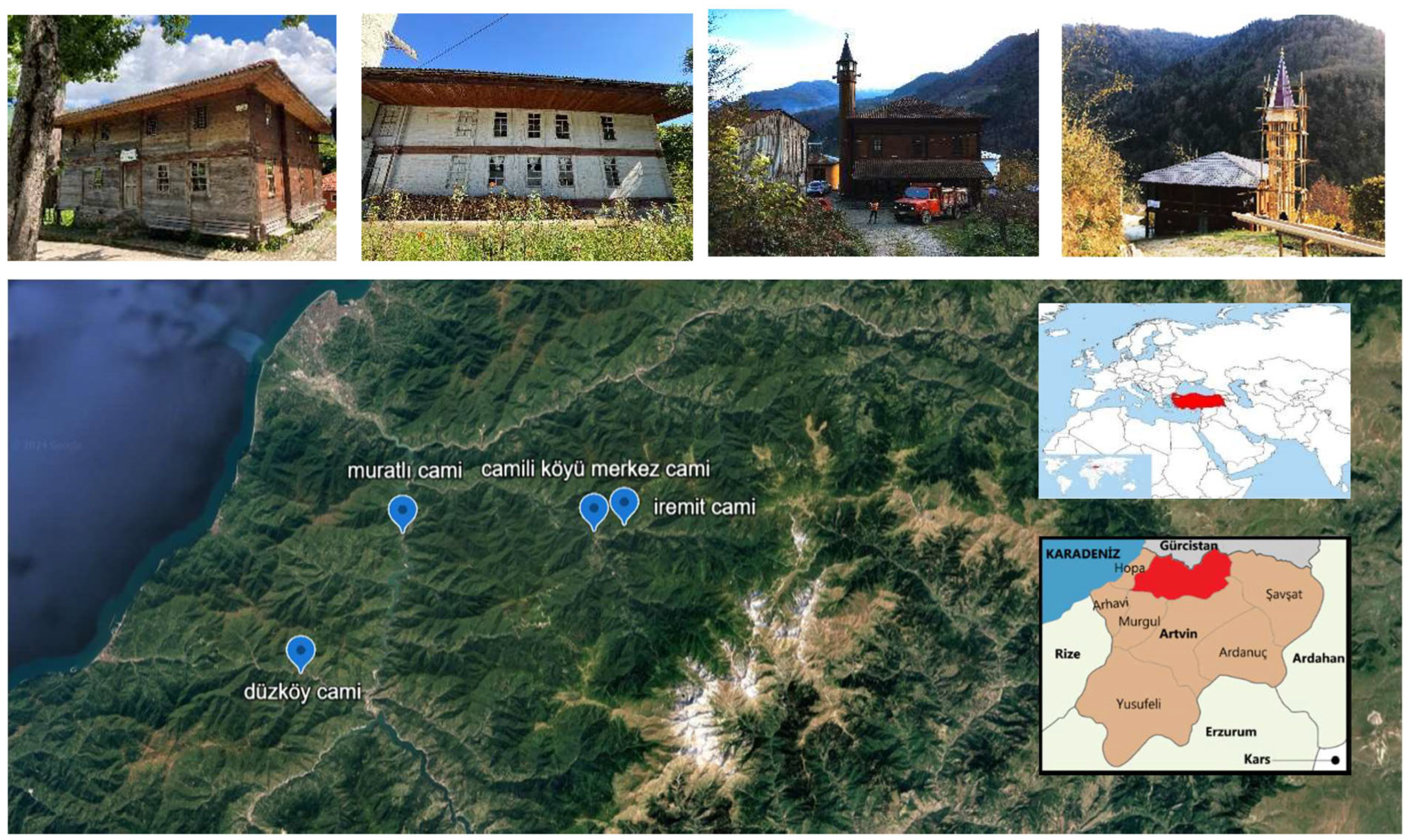
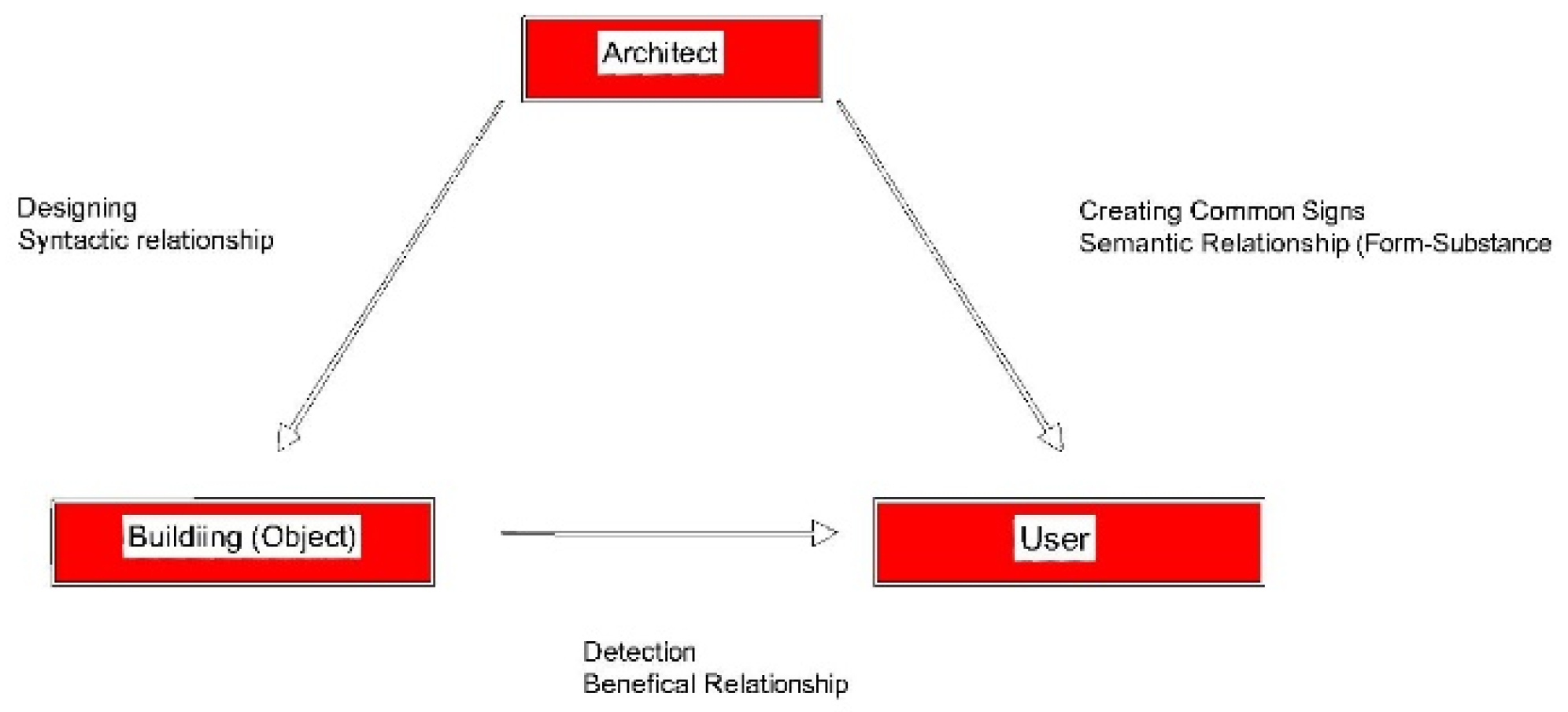
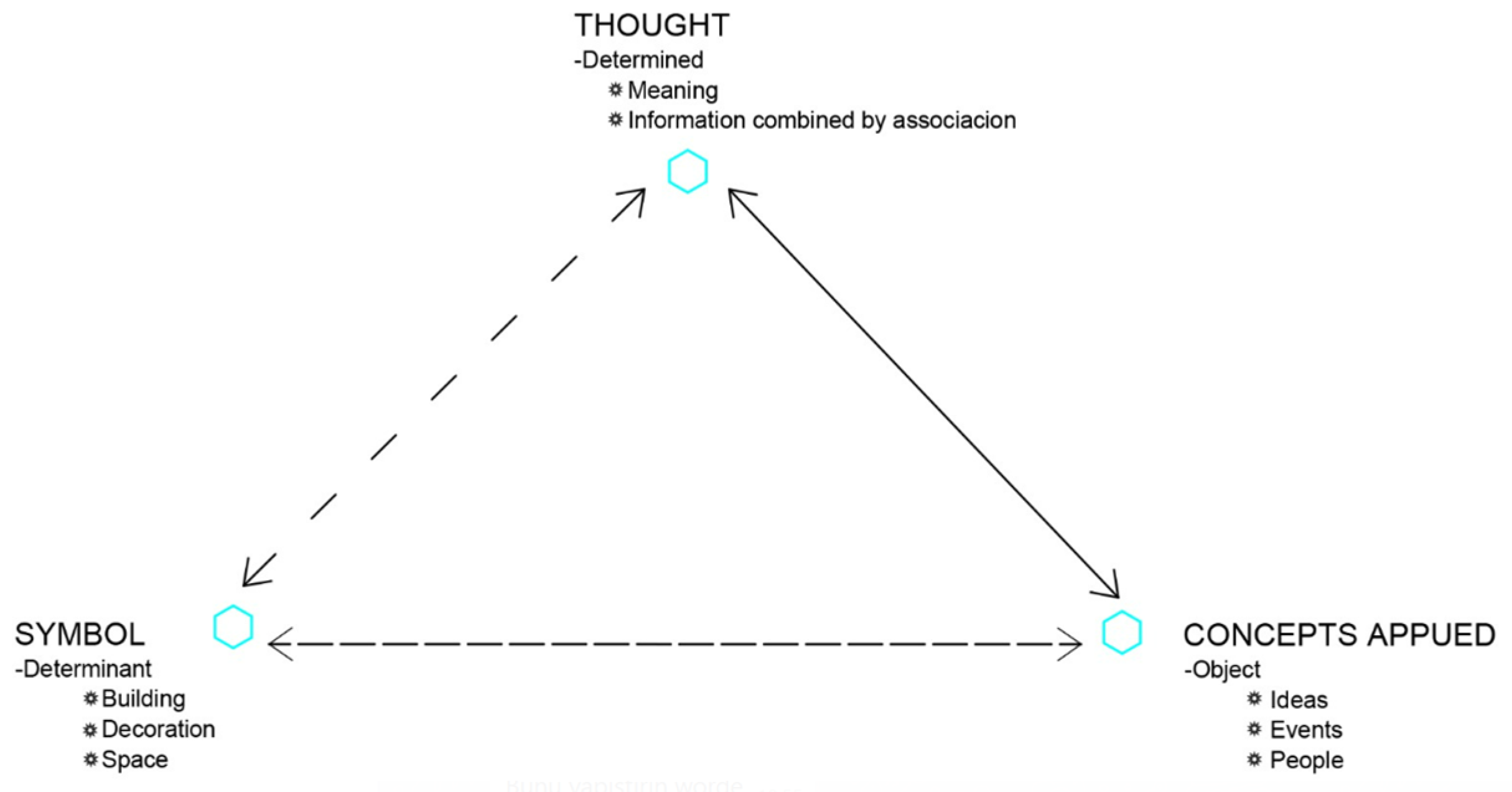
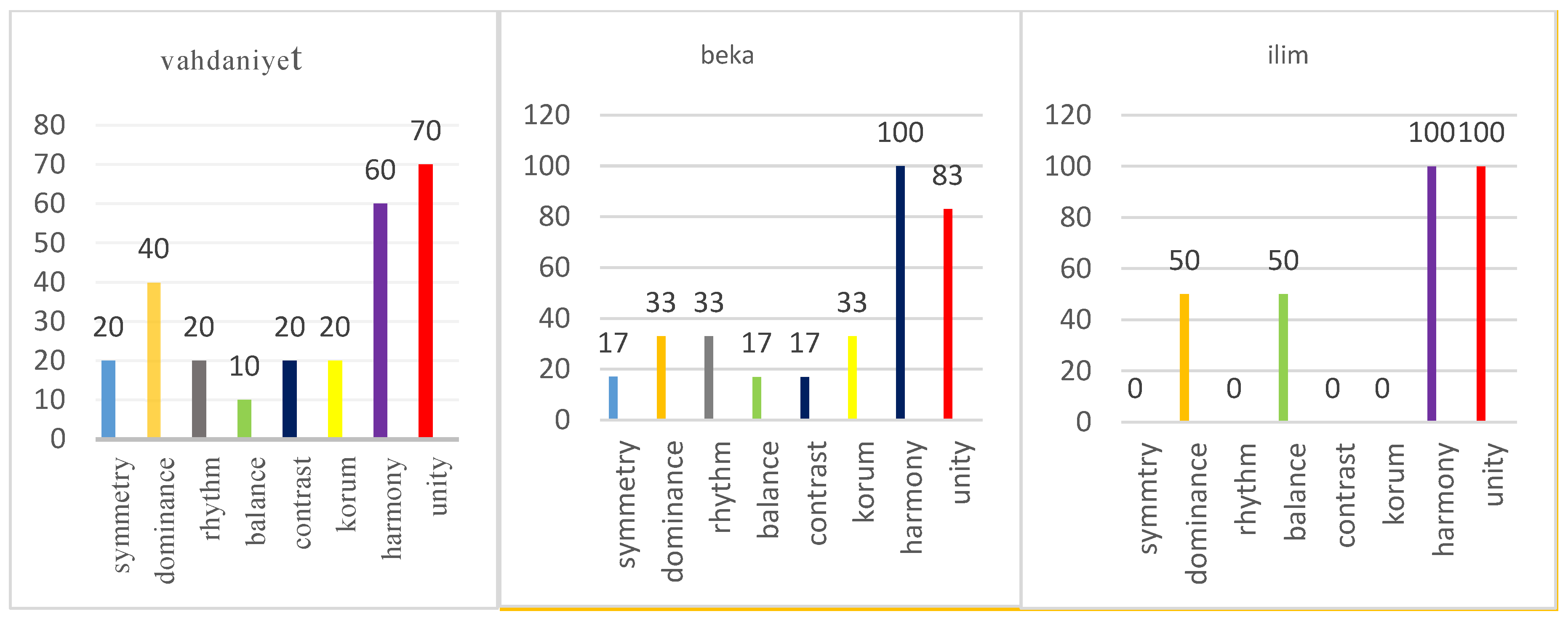
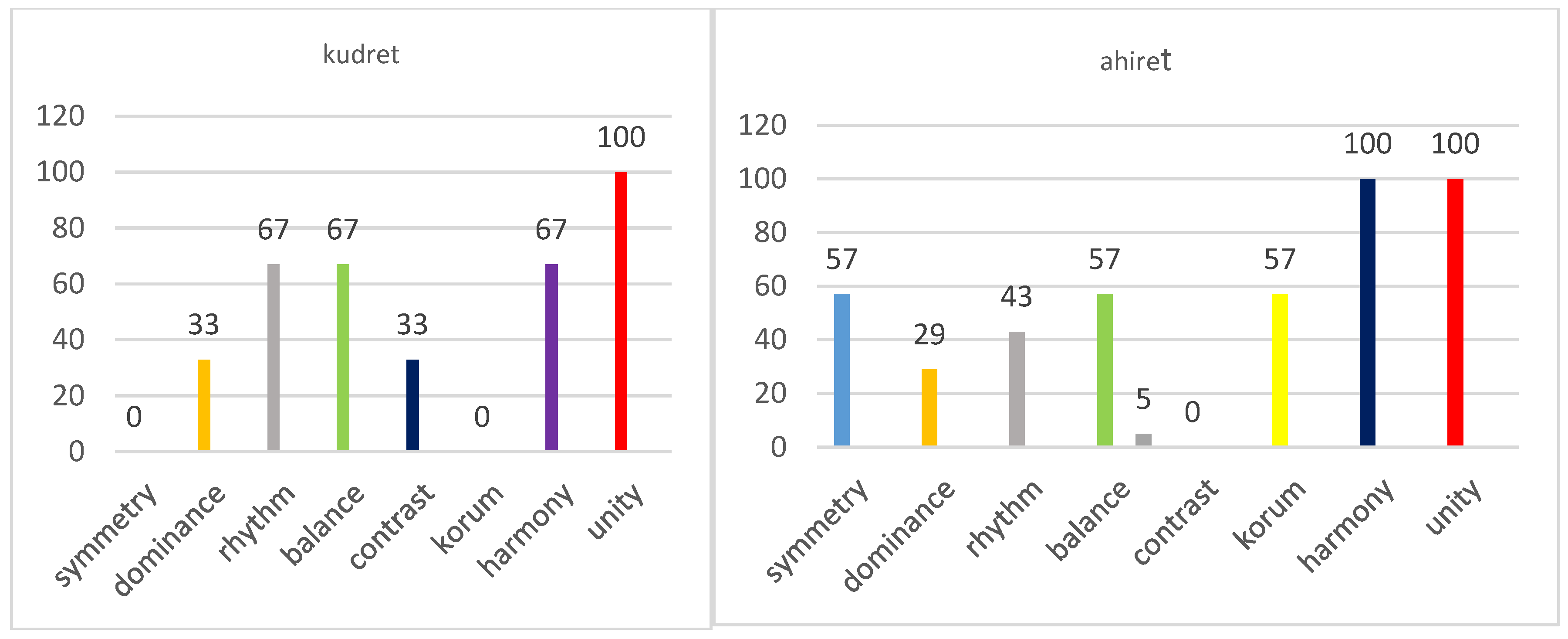
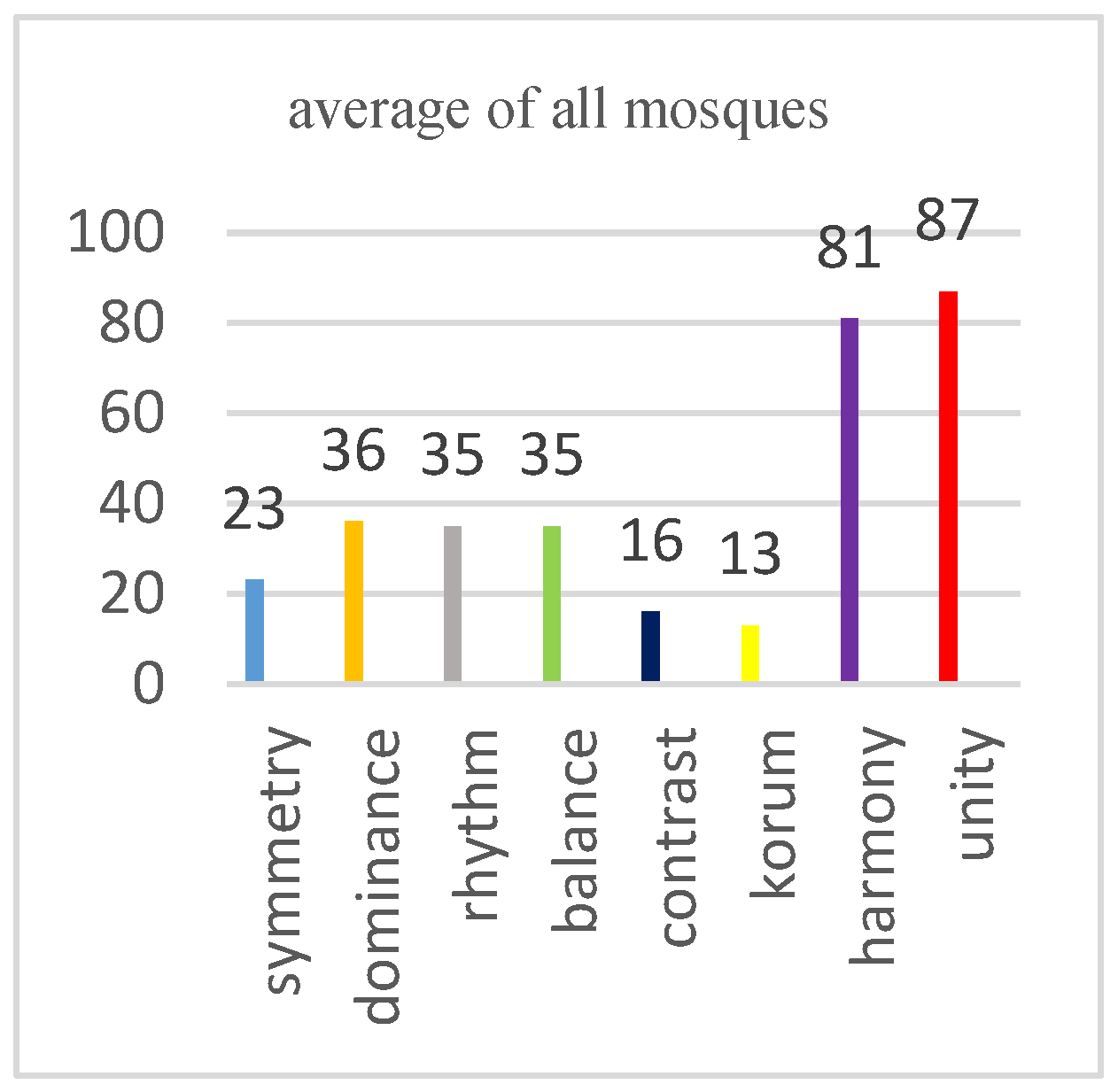
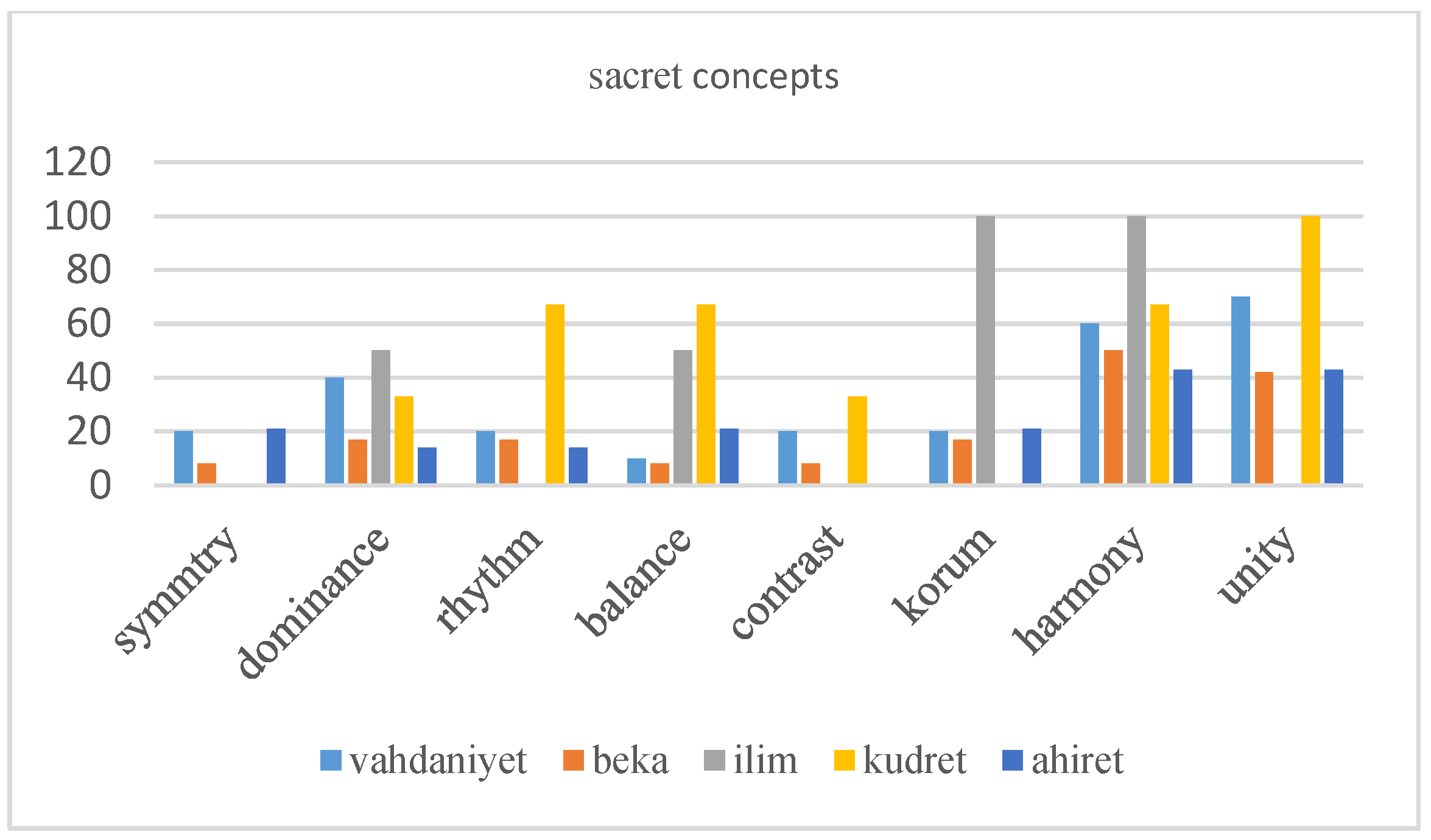
| Concepts Related to Faith (Belief) | ||||
|---|---|---|---|---|
| Concepts | Sub-Concepts | Opposite Concepts | ||
| God | Vahdaniyet | - unity, uniqueness | - shirk, associating partners, pluralism | |
| Beka | - eternity - immortality - continuity - persistence | - finiteness - mortality - finiteness, discontinuity - transience, mortality | ||
| İlim | - to know | - ignorance, lack of knowledge | ||
| Kudret | - power, authority | - weakness, powerlessness, impotence | ||
| Ahiret | - resurrection - armageddon (gathering place) - account, inquiry | - world | ||
| paradise | - unique - beauty, goodness, happiness, affection, love - peace - reward - eternal, permanent, permanent, everlasting, everlasting, immortal, perpetual life - eternal comfort - good deed - bright, spacious, open | |||
| hell | - unique - ugliness, evil, unhappiness - restlessness, distress, sadness - punishment - eternal, permanent, permanent, everlasting, everlasting, immortal, perpetual life - discomfort - sin - dark, gloomy - off, stiffness, dullness | |||
| Semantic Dimension | ||
|---|---|---|
| Sub-Concepts | ||
| Unity, oneness/ Shirk, associating partners, pluralism | Eternity, immortality, permanence/ Transience, mortality, finitude | Infinity/ Finality |
| Continuity, continuity/ Finiteness, discontinuity | Warm, welcoming/ Cold, inhospitable | Kudret, authority/ Kudretlessness, helplessness |
| Beauty, goodness, love, respect, Happiness/ Ugliness, evil, unhappiness | Peace, soothing, restful/ Restlessness, unsettling | Answer/ Sin |
| Effective, potent, assertive/Ineffective, ineffective, unpretentious | Free space, unlimited, void/Limited, enclosed space | Durability/ Indurability |
| Rhythmic, harmonious/ Rhythmic, dissonant | Community, cohesion, togetherness/ Loneliness | Orientation/ Disorientation |
| Discipline, order, balance/ Chaos | To submit, to surrender/ Rebellious | Knowledge, wisdom/ Ignorance, ignorance |
| Bright, spacious, open/ Dark, gloomy, closed | Sacred, religious, spiritual/ Unholy | Heavy/ Light |
| High/ Low | Empty/ Full, whole | Dynamic/ Flat, boring, monotonous |
| Mystical, mysterious/ not mysterious | Inwardly oriented/ Outwardly oriented | |
| Symmetry Principle | |
|---|---|
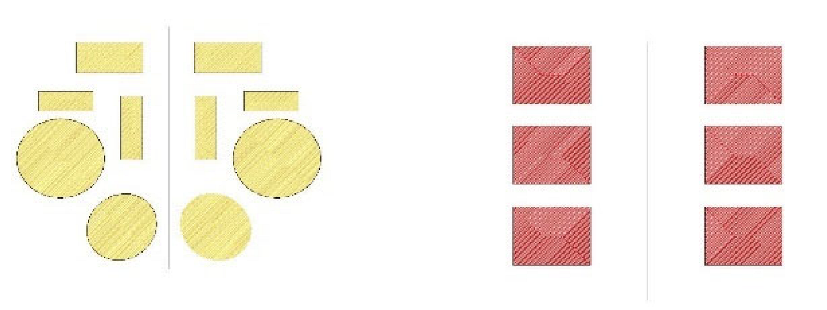 |  |
 | 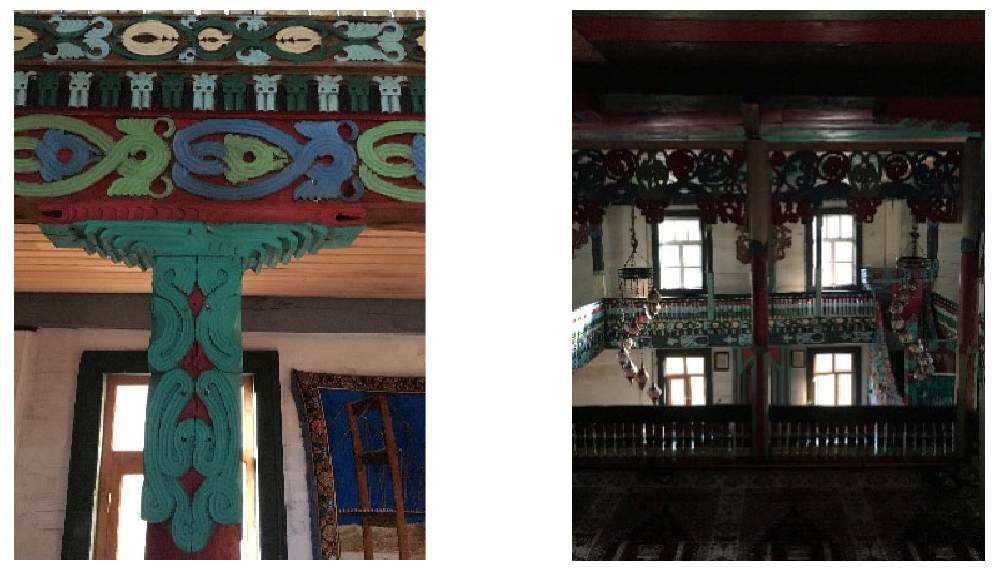 |
| Principle of Dominance |
|---|
 |
 |
| The Principle of Rhythm and Repetition |
|---|
 |
 |
| Principle of Balance |
|---|
 |
 |
| Principle of Contrast |
|---|
 |
 |
| Axial Measure Koram, Centric Measure Koram |
|---|
 |
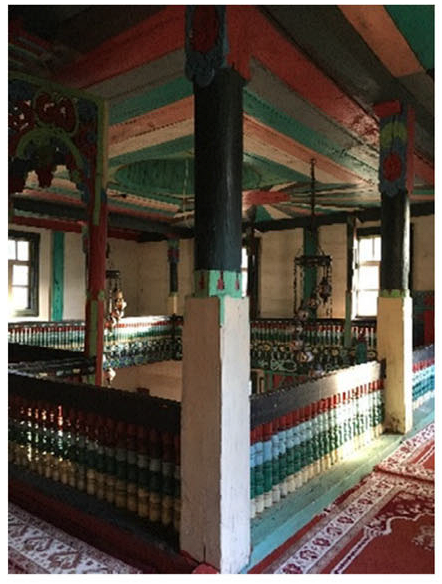 |
| Harmony |
|---|
 |
 |
| Inciple of Unity | ||
|---|---|---|
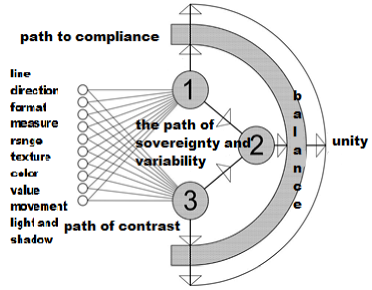 | ||
 | ||
| Formatting principles | Semantic dimension | |||||||
| Sub-Concepts Analysed Depending on Basic Concepts and Emotional Reactions in the Kur’an | ||||||||
| Unity, oneness/ Shirk, associating partners, pluralism | Eternity, immortality, permanence/ Transience, mortality, finitude | Infinity/ Finality | ||||||
| Continuity, continuity/ Finiteness, discontinuity | Warm, welcoming/ Cold, inhospitable | Kudret, authority/ Kudretlessness, helplessness | ||||||
| Beauty, goodness, love, respect, Happiness/ ugliness, evil, unhappiness | Peace, soothing, restful/ Restlessness, unsettling | Answer/ Sin | ||||||
| Effective, potent, assertive/Ineffective, ineffective, unpretentious | Free space, unlimited, void/Limited, enclosed space | Durability/ Indurability | ||||||
| Rhythmic, harmonious/ Rhythmic, dissonant | Community, cohesion, togetherness/ Loneliness | Orientation/ Disorientation | ||||||
| Discipline, order, balance/ Chaos | To submit, to surrender/ Rebellious | Knowledge, wisdom/ Ignorance, ignorance | ||||||
| Bright, spacious, open/ Dark, gloomy, closed | Sacred, religious, spiritual/ Unholy | Heavy/ Light | ||||||
| High/ Low | Empty/ Full, whole | Dynamic/ Flat, boring, monotonous | ||||||
| Mystical, mysterious/ not mysterious | Inwardly oriented/ Outwardly oriented | |||||||
| Syntactic dimension | ||||||||
| Basic design principles | ||||||||
| Symmetry | Dominance | Rhythm | Balance | Contrast | Koram | Harmony | Unity | |
| The Semantic Dimension of the Concept of vahdaniyet and the Basic Design Principle(s) İt Refers to | ||||||||
|---|---|---|---|---|---|---|---|---|
| Concepts in Semantic Dimension | Basic Design Principles That Can Be Expressed in the Syntactic Dimension | |||||||
| Iremit Mosque, Camili Köyü Merkez Mosque, Muratlı Köyü Mosque, Düzköy Mosque | Symmetry | Dominance | Rhythm | Balance | Contrast | Koram | Harmony | Unity |
| Oneness-unity | ||||||||
| To submit–to surrender | ||||||||
| Discipline-order-balance | ||||||||
| Orientation | ||||||||
| Unlimited-space-free | ||||||||
| Mystical-mysterious | ||||||||
| Rhythmic-compatible | ||||||||
| Dynamic | ||||||||
| Holy-spiritual | ||||||||
| Inward orientated | ||||||||
| The Semantic Dimension of the Concept of beka and the Basic Design Principle(s) It Refers to | ||||||||
|---|---|---|---|---|---|---|---|---|
| Concepts in Semantic Dimension | Basic Design Principles That Can Be Expressed in the Syntactic Dimension | |||||||
| Iremit Mosque, Camili Köyü Merkez Mosque, Muratlı Köyü Mosque, Düzköy Mosque | Symmetry | Dominance | Rhythm | Balance | Contrast | Koram | Harmony | Unity |
| Eternity, immortality, permanence | ||||||||
| Infinity | ||||||||
| Continuity, continuity | ||||||||
| Discipline, order, balance | ||||||||
| Rhythmic, harmonious | ||||||||
| Mystical, mysterious | ||||||||
| The Semantic Dimension of the Concept of İlim and the Basic Design Principle(s) İt Refers to | ||||||||
|---|---|---|---|---|---|---|---|---|
| Concepts in Semantic Dimension | Basic Design Principles That Can Be Expressed in the Syntactic Dimension | |||||||
| Iremit Mosque, Camili Köyü Merkez Mosque, Muratlı Köyü Mosque, Düzköy Mosque | Symmetry | Dominance | Rhythm | Balance | Contrast | Koram | Harmony | Unity |
| Knowledge, wisdom | ||||||||
| Resilience | ||||||||
| Sub-Concepts of the Concept of Kudret and Related Concepts Basic Design Principles | ||||||||
|---|---|---|---|---|---|---|---|---|
| Concepts in Semantic Dimension | Basic Design Principles That Can Be Expressed in the Syntactic Dimension | |||||||
| Iremit Mosque, Camili Köyü Merkez Mosque, Muratlı Köyü Mosque, Düzköy Mosque | Symmetry | Dominance | Rhythm | Balance | Contrast | Koram | Harmony | Unity |
| Kudret, authority | ||||||||
| Effective, potent, assertive | ||||||||
| Empty | ||||||||
| Lightweight | ||||||||
| Low | ||||||||
| Intolerability | ||||||||
| Sub-Concepts of the Concept of Ahiret and Related Concepts Basic Design Principles | ||||||||
|---|---|---|---|---|---|---|---|---|
| Concepts in Semantic Dimension | Basic Design Principles That Can Be Expressed in the Syntactic Dimension | |||||||
| Iremit Mosque, Camili Köyü Merkez Mosque, Muratlı Köyü Mosque, Düzköy Mosque | Symmetry | Dominance | Rhythm | Balance | Contrast | Koram | Harmony | Unity |
| Beauty, goodness, happiness, love, respect | ||||||||
| Tranquility, peaceful, restful | ||||||||
| Eternity, immortality, permanence | ||||||||
| Answer | ||||||||
| Bright, spacious, open | ||||||||
| Community, cohesion, togetherness (congregation) | ||||||||
| Warm, hospitable | ||||||||
| In Rural Wooden Mosque Architecture Sub-Concepts of Religious Concepts and Related Basic Design Principles | ||
|---|---|---|
| Concepts in semantic dimension | Basic design principles in the syntactic dimension | |
| The concept of vahdaniyet | unity, unity | unity |
| to submit, to surrender | dominance | |
| discipline, order, balance | symmetry, balance, harmony, unity | |
| orientation | coram, harmony, unity | |
| free space, unlimited, emptiness | symmetry, dominance, rhythm | |
| mystical, mysterious | dominance, harmony, unity | |
| rhythmic, harmonious | rhythm, harmony, unity | |
| dynamic | dominance, contrast, koram | |
| holy, religious, spiritual | harmony, unity | |
| inward oriented | contrast, harmony, unity | |
| In the mosque examples examined, unity and harmony, which are among the basic design principles in the syntactic dimension as an indicator of the concept of Vahdaniyet, were most frequently seen. | ||
| Concepts in semantic dimension | Basic design principles in the syntactic dimension | |
| The concept of beka | impermanence, mortality, finitude | contrast, harmony, unity |
| infinity | dominance, koram, harmony, unity | |
| continuity, continuity | rhythm, koram, kontrast | |
| discipline, order, balance | symmetry, balance, harmony, unity | |
| rhythmic, harmonious | rhythm, harmony, unity | |
| mystical, mysterious | dominance, harmony, unity | |
| In the examined mosque examples, harmony and unity, which are among the basic design principles in the syntactic dimension as an indicator of the concept of Beka, were most common. | ||
| Concepts in semantic dimension | Basic design principles in the syntactic dimension | |
| The concept of ilim | knowledge, wisdom | balance, harmony, unity |
| resilience | dominance, harmony, unity | |
| In the examined mosque examples, harmony and unity, which are among the basic design principles in the syntactic dimension as an indicator of the concept of İlim, were most common. | ||
| Concepts in semantic dimension | Basic design principles in the syntactic dimension | |
| The concept of kudret | kudret, authority | dominance, contrast, unity |
| effective, potent, assertive | dominance, contrast, unity | |
| empty | rhythm, balance, harmony, unity | |
| lightweight | rhythm, balance, harmony, unity | |
| low | rhythm, balance, harmony, unity | |
| lack of durability | rhythm, balance, harmony, unity | |
| In the mosque examples examined, rhythm, balance, harmony and unity, which are among the basic design principles in the syntactic dimension as an indicator of the concept of Kudret, were most frequently seen. | ||
| Concepts in semantic dimension | Basic design brinciples in the syntactic dimension | |
| Concept of ahiret | beauty, goodness, happiness, love, respect | symmetry, dominance, rhythm, balance, koram, harmony, unity |
| tranquility, peaceful, restful | symmetry, rhythm, balance, koram, harmony, unity | |
| eternity, immortality, permanence | dominance, harmony, unity | |
| answer | harmony, unity | |
| bright, spacious, open | harmony, unity | |
| community, cohesion, togetherness (congregation) | symmetry, balance, balance, koram, harmony, unity | |
| warm, hospitable | symmetry, rhythm, balance, harmony, unity | |
| In the examined mosque examples, harmony and unity, which are among the basic design principles in the syntactic dimension as an indicator of the concept of the ahiret, were most common. | ||
Disclaimer/Publisher’s Note: The statements, opinions and data contained in all publications are solely those of the individual author(s) and contributor(s) and not of MDPI and/or the editor(s). MDPI and/or the editor(s) disclaim responsibility for any injury to people or property resulting from any ideas, methods, instructions or products referred to in the content. |
© 2025 by the authors. Licensee MDPI, Basel, Switzerland. This article is an open access article distributed under the terms and conditions of the Creative Commons Attribution (CC BY) license (https://creativecommons.org/licenses/by/4.0/).
Share and Cite
Çakıroğlu, B.; Akat, R.; Çakıroğlu, E.O.; Taşdemir, T. Semantic and Syntactic Dimensional Analysis of Rural Wooden Mosque Architecture in Borçka. Buildings 2025, 15, 297. https://doi.org/10.3390/buildings15020297
Çakıroğlu B, Akat R, Çakıroğlu EO, Taşdemir T. Semantic and Syntactic Dimensional Analysis of Rural Wooden Mosque Architecture in Borçka. Buildings. 2025; 15(2):297. https://doi.org/10.3390/buildings15020297
Chicago/Turabian StyleÇakıroğlu, Birgül, Reyhan Akat, Evren Osman Çakıroğlu, and Taner Taşdemir. 2025. "Semantic and Syntactic Dimensional Analysis of Rural Wooden Mosque Architecture in Borçka" Buildings 15, no. 2: 297. https://doi.org/10.3390/buildings15020297
APA StyleÇakıroğlu, B., Akat, R., Çakıroğlu, E. O., & Taşdemir, T. (2025). Semantic and Syntactic Dimensional Analysis of Rural Wooden Mosque Architecture in Borçka. Buildings, 15(2), 297. https://doi.org/10.3390/buildings15020297






